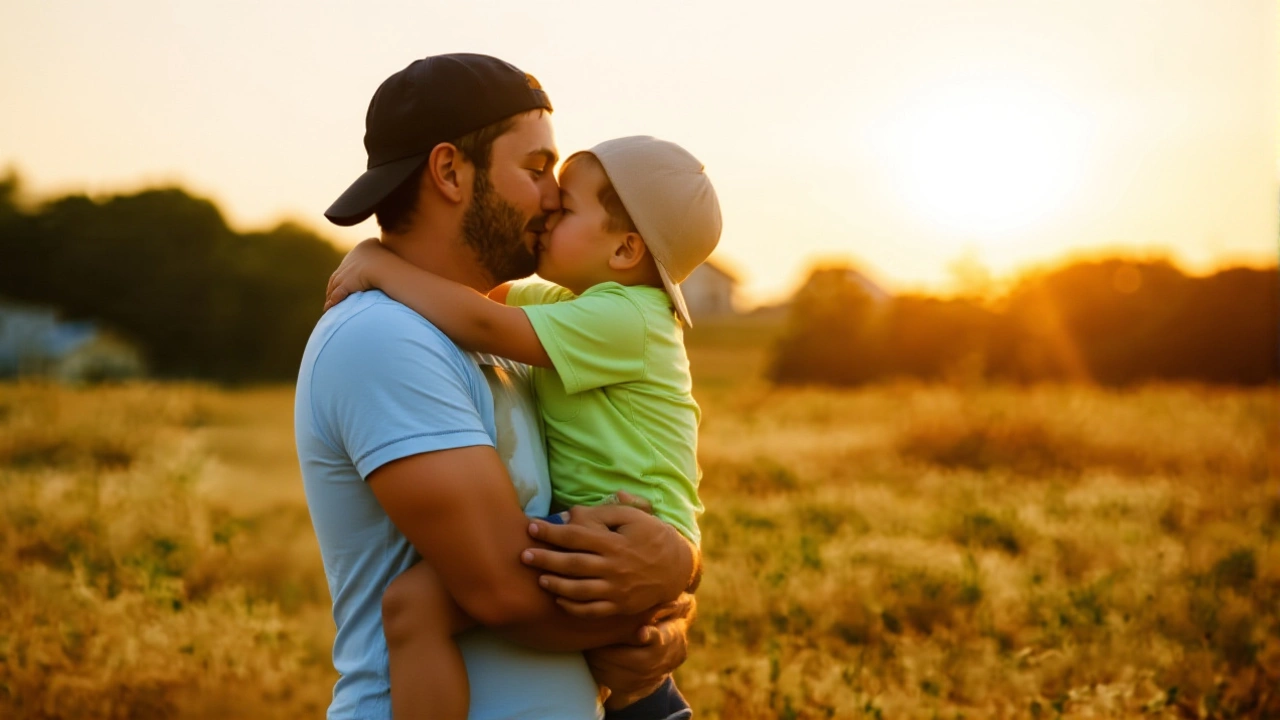On November 19, 2025, the world will pause for International Men's Day—not with parades or speeches, but with a 9-hour global webcast streaming live from Sydney, Australia. The theme, 'Celebrating Men and Boys', isn’t just a slogan. It’s a lifeline for millions of men who feel unseen, unheard, and unsupported. With suicide rates among men still staggering—especially in countries like India, where stigma keeps men from seeking help—the day has evolved into something far more urgent than celebration. It’s a call to action.
From One Man’s Idea to a Global Movement
Back in 1999, a small group in Australia started marking November 19 as a day to honor men’s contributions and confront the silent crises they face. No one expected it to spread. But today, International Men's Day organization reports the observance is recognized in over 80 countries. What began as a grassroots effort has become a coordinated global effort, amplified by digital tools and social media. The webcast, running from 3:00 PM to midnight AEDT, will feature leaders from Africa, Asia, Europe, and the Americas—men and women alike—who’ve dedicated their lives to reshaping how society views masculinity.
The Webcast: More Than a Broadcast
Organizers are calling this webcast “a global movement in real-time.” It’s not just panels and presentations. It’s raw storytelling. A father in Nairobi talks about losing his son to suicide after years of silent suffering. A veteran in Toronto shares how therapy saved his life after years of believing “real men don’t cry.” A teacher in Mumbai describes how her classroom became a safe space for boys to express vulnerability. These aren’t curated soundbites. They’re real moments, unedited, unfiltered. Registration is required to join, not to gatekeep, but to ensure participants receive tailored resources—mental health hotlines, local support groups, even free toolkits for schools and workplaces.
UK Ministry of Justice Joins the Conversation
On the same day, Mark Thompson, a Digital and Data official at the United Kingdom's Ministry of Justice, published a blog post that quietly resonated across government offices. “At the Ministry of Justice, inclusion is something we all own,” he wrote. “For me, it’s about turning good intentions into everyday actions that help everyone feel valued and supported.” His message wasn’t political. It was practical. He urged managers to notice when a colleague withdraws. To ask, “Are you okay?”—and mean it. To stop assuming men are fine because they don’t complain. “Men also have a vital role in shaping environments where everyone can thrive,” Thompson added. “Equality isn’t just a goal. It’s a lived reality.”
The Numbers Behind the Words
The statistics are brutal. According to the Economic Times, men account for nearly 80% of suicide deaths in India alone. In the U.S., men die by suicide 3.8 times more often than women. In the UK, it’s the leading cause of death for men under 45. And yet, fewer than 30% of men in high-income countries seek mental health care annually. Why? Shame. Fear of being seen as weak. Cultural scripts that equate emotional openness with failure. “We’ve trained boys to bottle it up,” says Dr. Alan Ruiz, a clinical psychologist in Melbourne who’s been working with male youth for 22 years. “Then we wonder why they explode—or disappear.”

November: A Month of Connected Causes
International Men’s Day doesn’t exist in isolation. It’s the anchor of a 48-hour window of observances. Movember—already known for mustaches and prostate cancer awareness—spans the entire month. Men’s Equality Month, promoted by advocacy groups in Canada and the UK, calls for equal access to parental leave, custody rights, and health services. Then, on November 20, International Children's Day arrives. The link? Fathers, uncles, coaches, mentors. The bond between men and children is often the first place boys learn how to love, lead, and feel safe. “If we want healthier boys,” says Dr. Ruiz, “we need healthier men. Not perfect men. Just present ones.”
What’s Next? The Real Work Begins
The webcast ends at midnight AEDT. But the movement doesn’t. Schools in Johannesburg are already planning “Men’s Circle” sessions for next term. In Delhi, a coalition of barbershops and auto-rickshaw unions are training staff to recognize signs of depression in customers. In London, the Ministry of Justice is rolling out a pilot program where male inmates can access peer-led mental health workshops. These aren’t flashy campaigns. They’re quiet, persistent changes. The kind that save lives.
Why This Matters to You
You might not be a father. You might not know a man struggling with depression. But you know someone. A coworker who laughs too loud. A cousin who stopped texting. A friend who says, “I’m fine,” and looks away. That’s where change starts—not in grand gestures, but in small, brave questions. “How are you, really?”
Frequently Asked Questions
Why is International Men's Day on November 19?
November 19 was chosen to honor the birthday of Dr. Jerome Teelucksingh, a Trinidadian historian who revived the modern observance in 1999. The date also aligns with Movember and International Children’s Day on November 20, creating a 48-hour window focused on men’s health and father-child bonds. This timing reinforces the idea that men’s well-being is tied to family, community, and intergenerational support.
How does the webcast help men’s mental health?
The 9-hour webcast doesn’t just raise awareness—it connects men to resources. Viewers get direct links to crisis hotlines, local therapy providers, and peer support networks. Many participants report feeling less alone after hearing stories from men who’ve faced similar struggles. The live Q&A segments also allow real-time questions, reducing the stigma around asking for help. It’s peer-to-peer healing, scaled globally.
What’s the difference between International Men's Day and Movember?
Movember focuses primarily on physical health—prostate cancer, testicular cancer, and suicide prevention—through fundraising and awareness campaigns. International Men’s Day takes a broader view: emotional well-being, toxic masculinity, fatherhood, workplace equality, and social isolation. Movember is a month-long fundraiser. International Men’s Day is a day of reflection, storytelling, and systemic change.
Why is the theme 'Celebrating Men and Boys' when the crisis is so serious?
Celebration isn’t denial—it’s balance. Focusing only on problems can make men feel like they’re defined by their struggles. This theme reminds them they’re valued for their strength, creativity, care, and resilience. It’s about affirming identity while addressing pain. You can’t heal what you won’t acknowledge—and you can’t sustain healing without dignity.
Can women participate in International Men's Day?
Absolutely. The day isn’t about excluding women—it’s about recognizing that men’s issues affect everyone. Mothers, sisters, partners, and colleagues often bear the emotional weight of men’s silence. Women lead many of the support groups, research initiatives, and policy changes driving this movement. Inclusion means everyone has a role in creating healthier relationships and environments.
What’s being done in India to address high male suicide rates?
In India, NGOs like Manav Sadhna and The Live Love Laugh Foundation are training community health workers to identify at-risk men in rural areas. Mobile apps offering anonymous counseling are gaining traction. Some states, including Kerala and Tamil Nadu, have integrated mental health screenings into public health centers. Still, cultural stigma remains the biggest barrier. The 2025 webcast will feature Indian speakers sharing local strategies, hoping to inspire scalable, culturally sensitive solutions.
